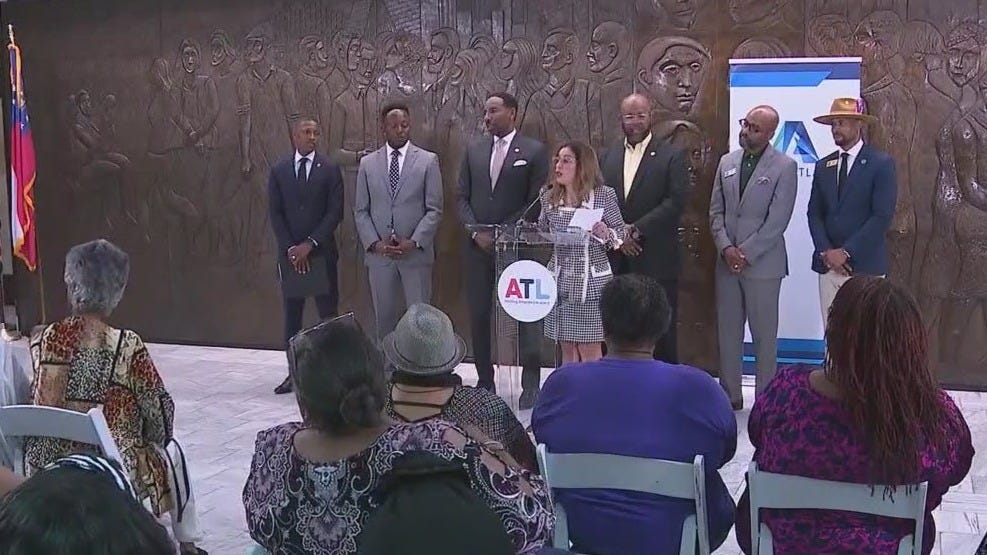Many Ohio homeowners are “mad as hell, and … not going to take this anymore!”

How one initiative is helping seniors stay in their homes
The City of Atlanta officially announced an initiative to help senior citizens remain in their homes despite soaring property taxes.
Fox – 5 Atlanta
Thomas Suddes is a former legislative reporter with The Plain Dealer in Cleveland and writes from Ohio University. tsuddes@gmail.com.
Because the Ohio General Assembly so far hasn’t lifted a finger to limit skyrocketing property taxes in Ohio, some Greater Clevelanders will be asking Ohio voters to abolish the property tax altogether. Yes, abolish.
Don’t scoff.
Like “Howard Beale” (Peter Finch), the enraged TV anchorman in the 1976 movie “Network,” many Ohio homeowners are “mad as hell, and … not going to take this anymore!”
Leaving aside for the moment the maddening complexity of Ohio’s laws on real estate taxes, and their legal gobbledygook, Ohioans’ disgust might not be so intense if the General Assembly would actually do something about real estate taxes.
But the legislature’s GOP leaders are apparently distracted by chit-chat over equally high-profile topics, such as possible state aid to help build a new Cleveland Browns stadium.
Then, too, the 2023-24 bipartisan General Assembly study group, the Joint Committee on Property Tax Review and Reform, went home in December without reaching any consensus on what to do.
So: If Citizens for Property Tax Reform, a “grass-roots citizens organization” led by Keith Davey, a Lakewood Republican who in 2022 ran unsuccessfully against Democratic then-Rep. Michael Skindell, can gather petition signatures from at least 413,487 registered voters statewide, Ohioans would get the chance to vote “yes” or “no” on this plain-English amendment to the Ohio Constitution:
“[Proposed] Article XII. Section 14. Abolishment of Taxes on Real Property.
“(A) No real property shall be taxed, and no law shall impose any taxes on real property.
“(B) No other provision of the Constitution shall impose any taxes on real property.
“(C) As used in this Section, ‘real property’ includes land, all growing crops, all buildings, all structures, and all improvements permanently attached to land.
“This Amendment shall take effect on the first day of the year after it passes.”
If voters agreed, then, for example, the $19.5 billion in property taxes paid by Ohio homeowners and other real estate owners in 2022 (an all-time high, the Legislative Service Commission says) would vanish like smoke in the wind. And neither Ohio nor any Ohio locality would ever be allowed to collect any real estate taxes, ever, which Ohio first imposed 200 years ago in 1825.
Forbidding any taxes on real estate would kill the way Ohio now finances local governments, local public services (such as development disabilities and mental health boards, and public libraries) — and devastate public schools.
Also, according to LSC research, about 60% of all property tax money now helps fund (often inadequately) Ohio’s 600+ public school districts. (Only Texas and California have more, the National Center for School Statistics reports.)
Where would school boards, etc., find that money? Even expanding Ohio’s 5.75 statewide sales tax to groceries (ballpark estimate of yearly statewide sales: $30 billion) would produce only about $1.73 billion a year in new revenue, and Ohio voters long ago (in a 1936 initiative, which drew a 69% “yes” vote) forbade charging sales taxes on groceries. (Nine states — nearest: Tennessee — do, while three others — nearest: Virginia — let localities to do so.)
Even so, despite many ands, ifs and buts, Ohio House Bill 920 of 1976 does to a great extent limit growth in annual property taxes. As cleveland.com explained, “As property values go up, the effective millage rates of [voted] levies generally go down to bring in the same amount of money that voters [had originally] approved.”
But that circuit-breaker doesn’t cover up to 10 mills of “inside millage.”
And in any case, as an Ohio school-finance expert testified to the joint study committee, “since 1984 there have been a total of 15,922 school operating and capital levies placed on the [Ohio] ballot … an average of 398 school levies per year, with an overall average passage rate of 54.9%.
Moreover, Howard Fleeter — an Ohio-based Berkeley Ph.D. widely respected for his school-funding expertise — also said this: “My 30-plus years of … researching K-12 education along with my extensive contacts with school finance researchers [nationwide] … have left no doubt that Ohio votes far more often on school levies than anywhere else in the nation.”
That is, while the anger of Ohio homeowners over reappraisal-induced tax increases on their property is palpable, the endless tidal wave of school levy requests (in effect, forced by House Bill 920) can be just as irksome.
The overarching problem is that the General Assembly doesn’t know or care that Ohioans, already squeezed by voodoo economics cooked up in the White House, want their property-tax/school funding concerns addressed. Now.
On that front, it would greatly help if the Republican-run legislature would stop ladling out buckets of tax money to private schools and instead fully fund Ohio’s public schools, which almost 90% of the state’s school-age children are attending. That’s the General Assembly constitutional obligation — which it’s shamelessly flouting.
Thomas Suddes is a former legislative reporter with The Plain Dealer in Cleveland and writes from Ohio University. tsuddes@gmail.com.

